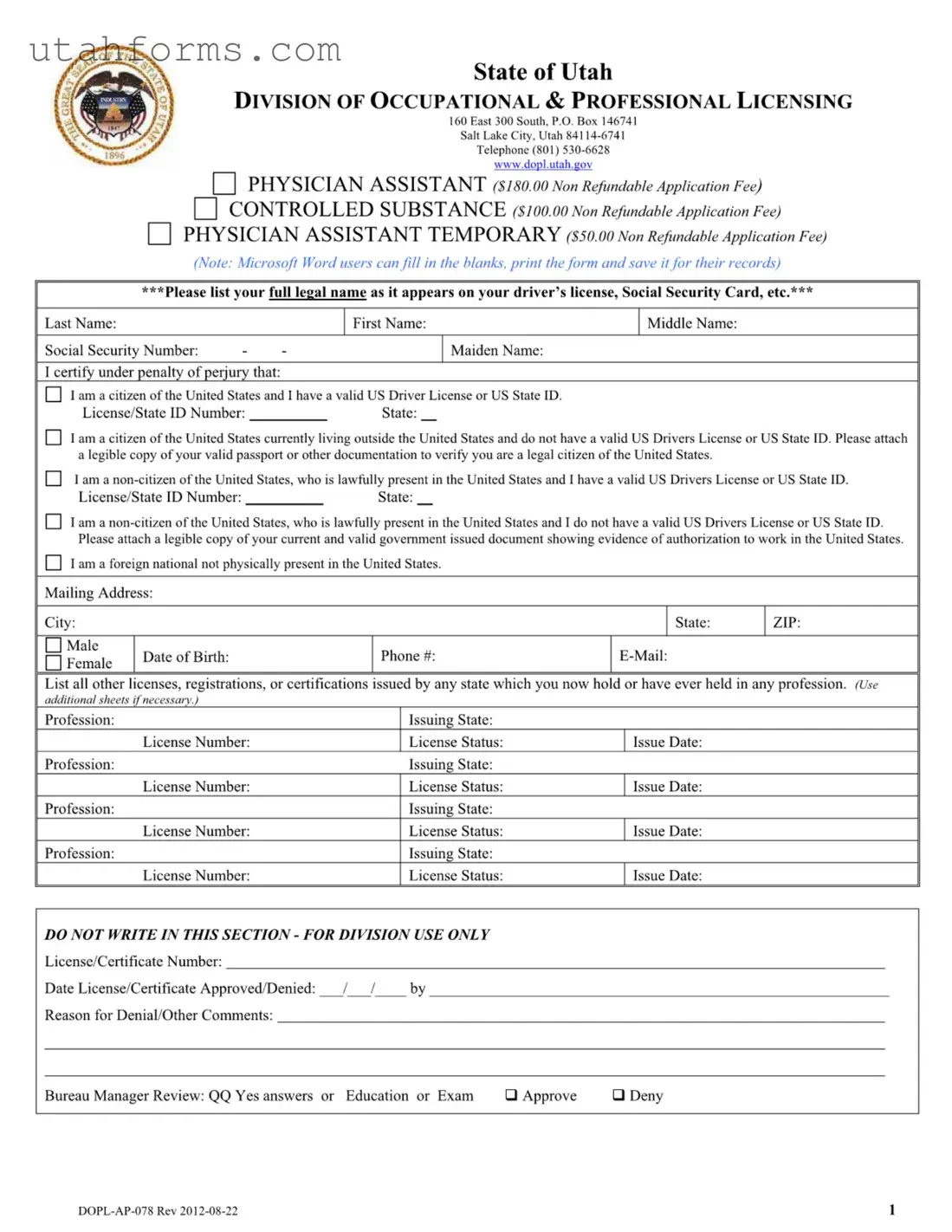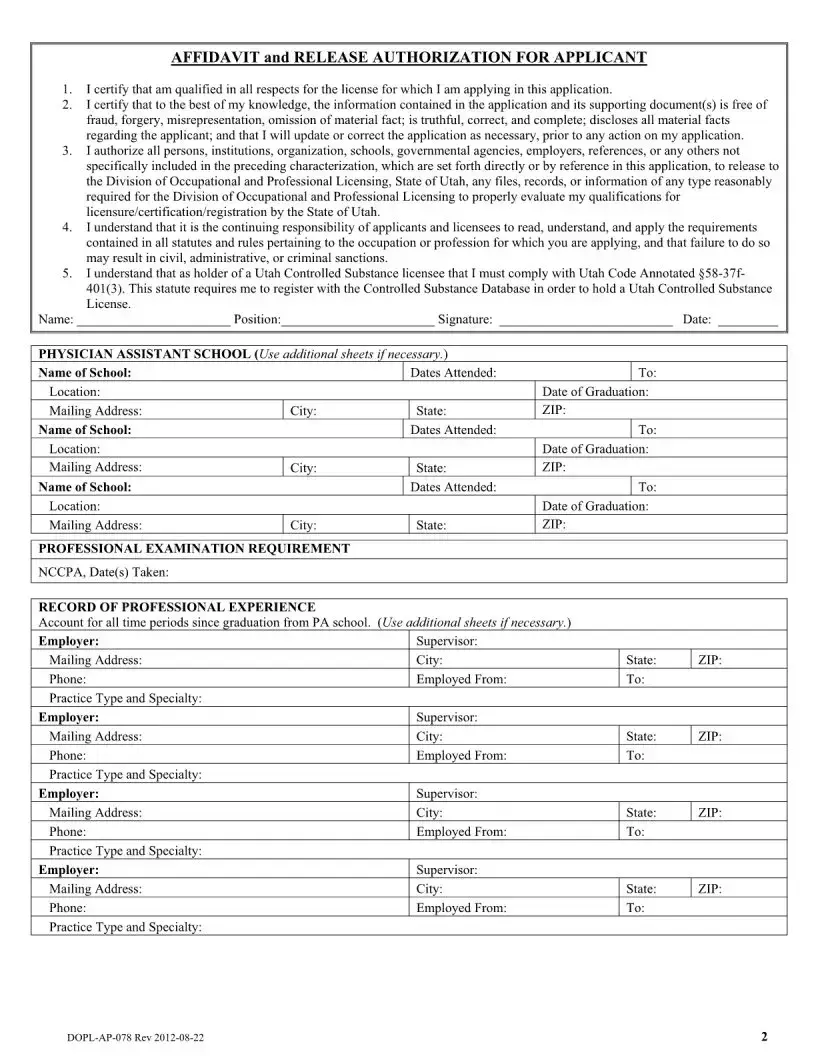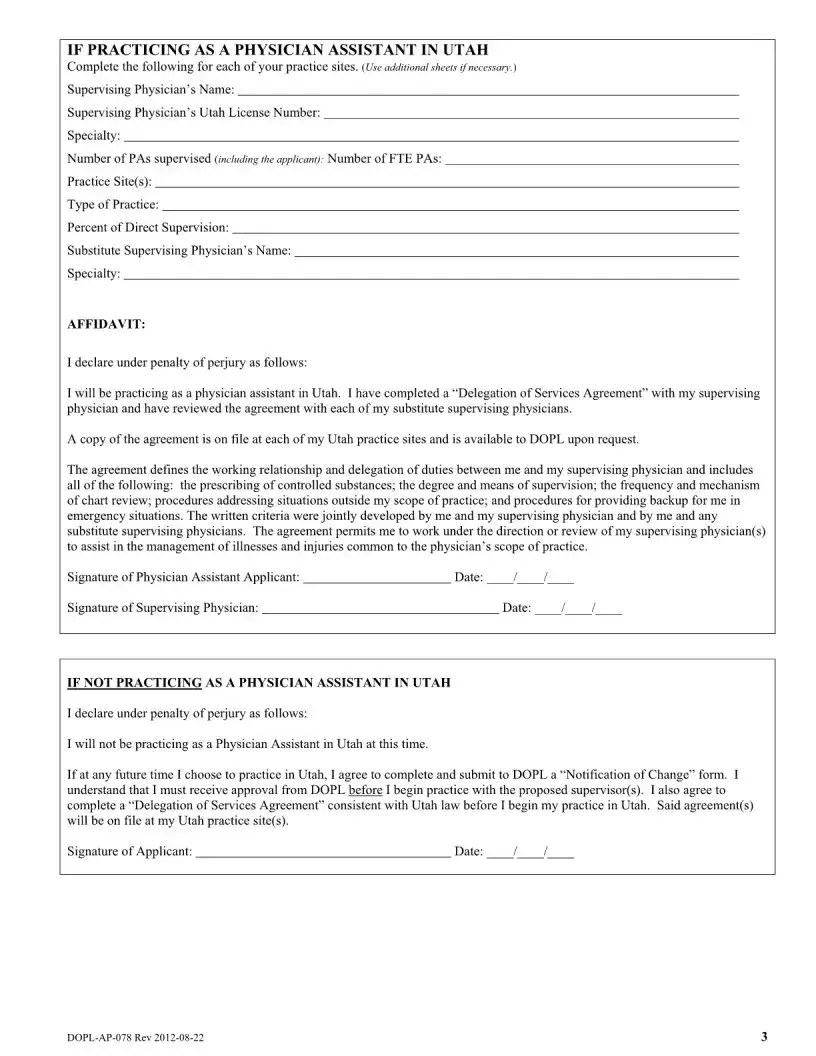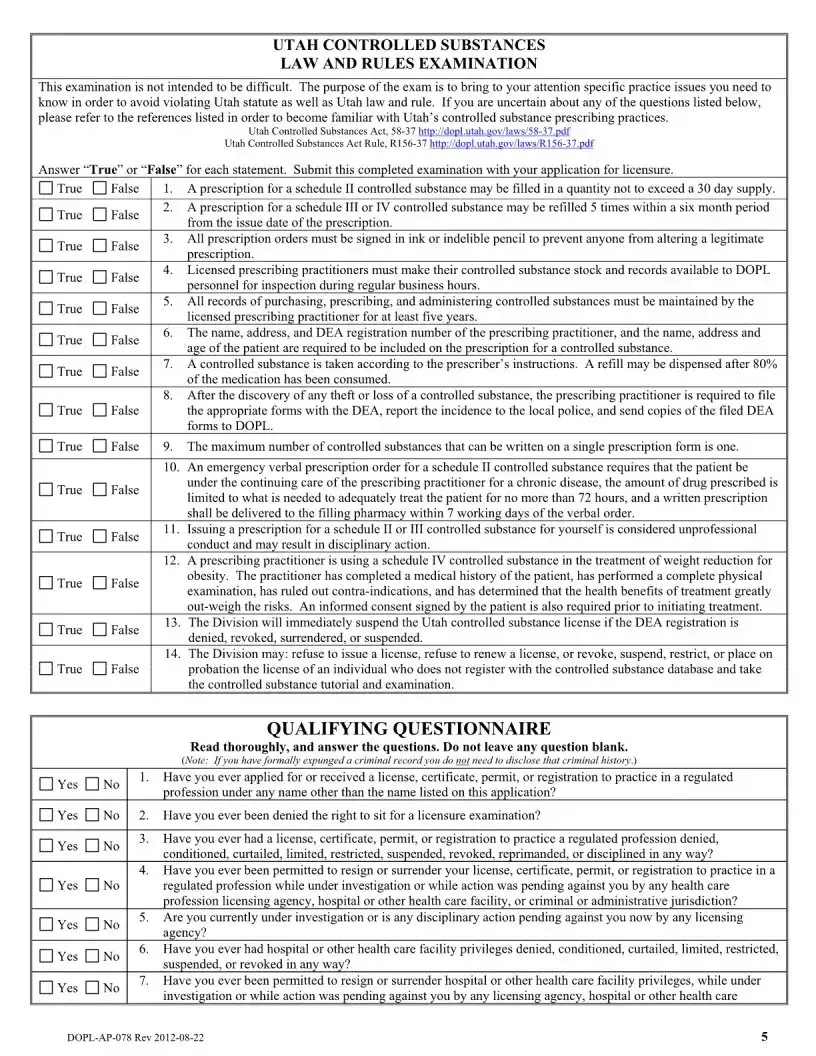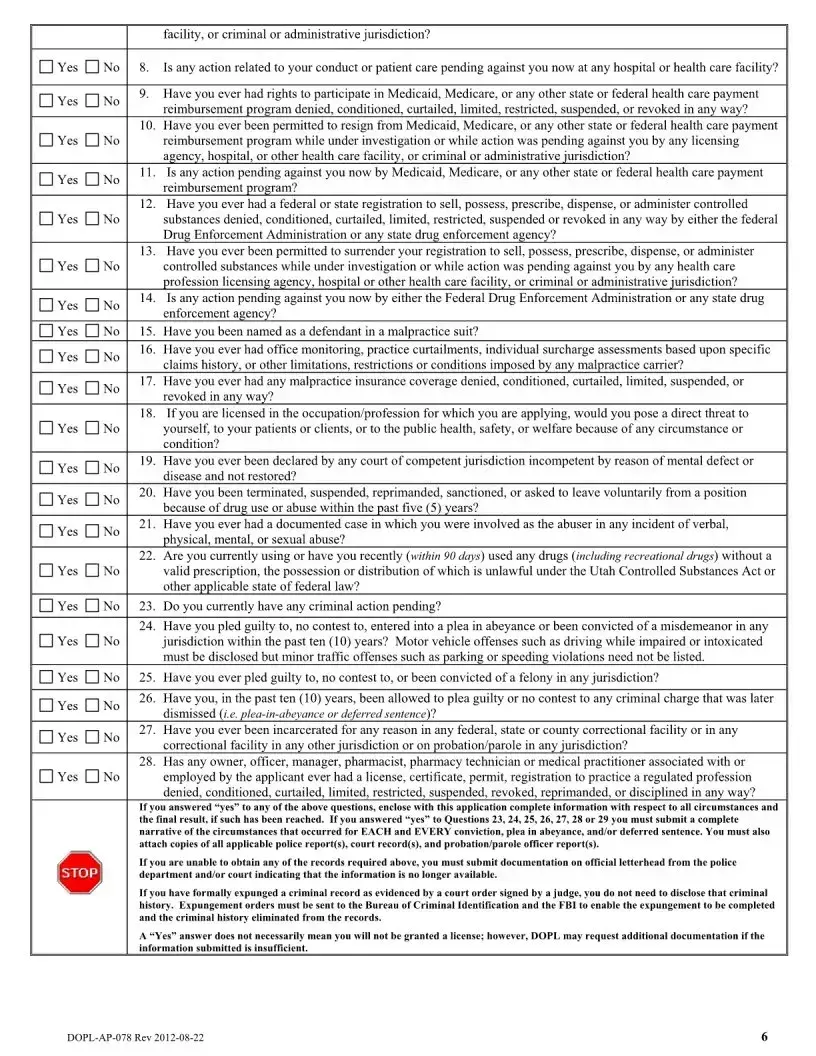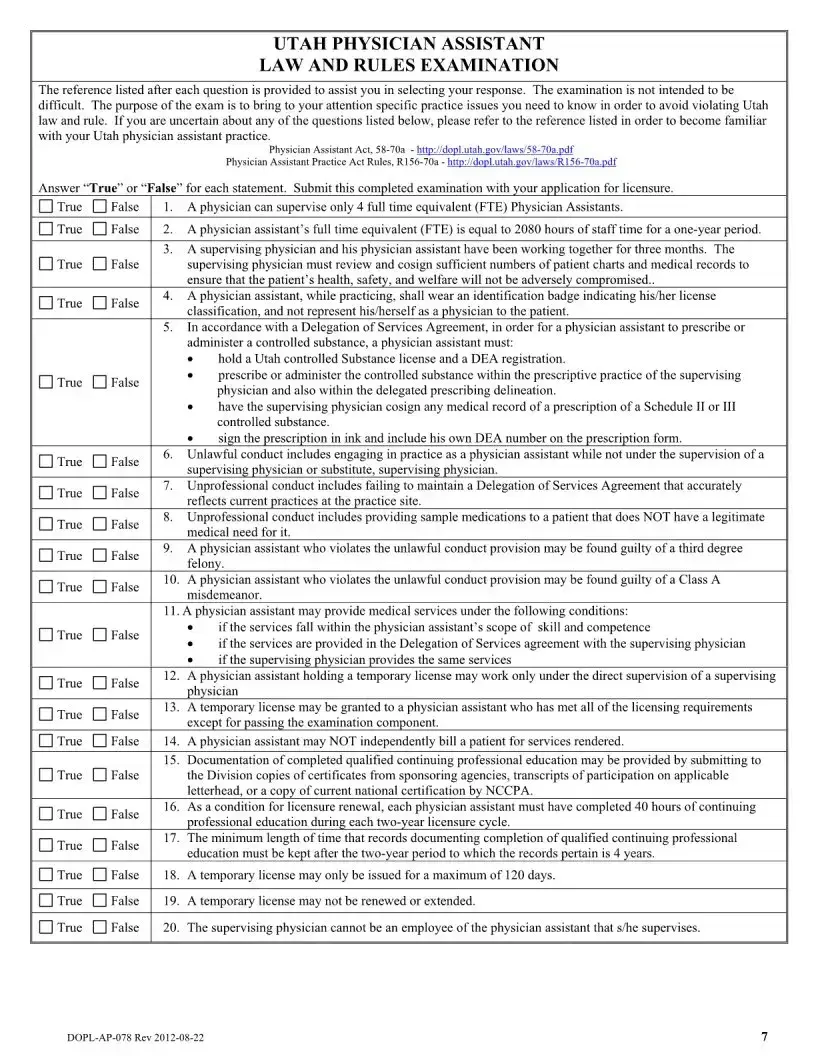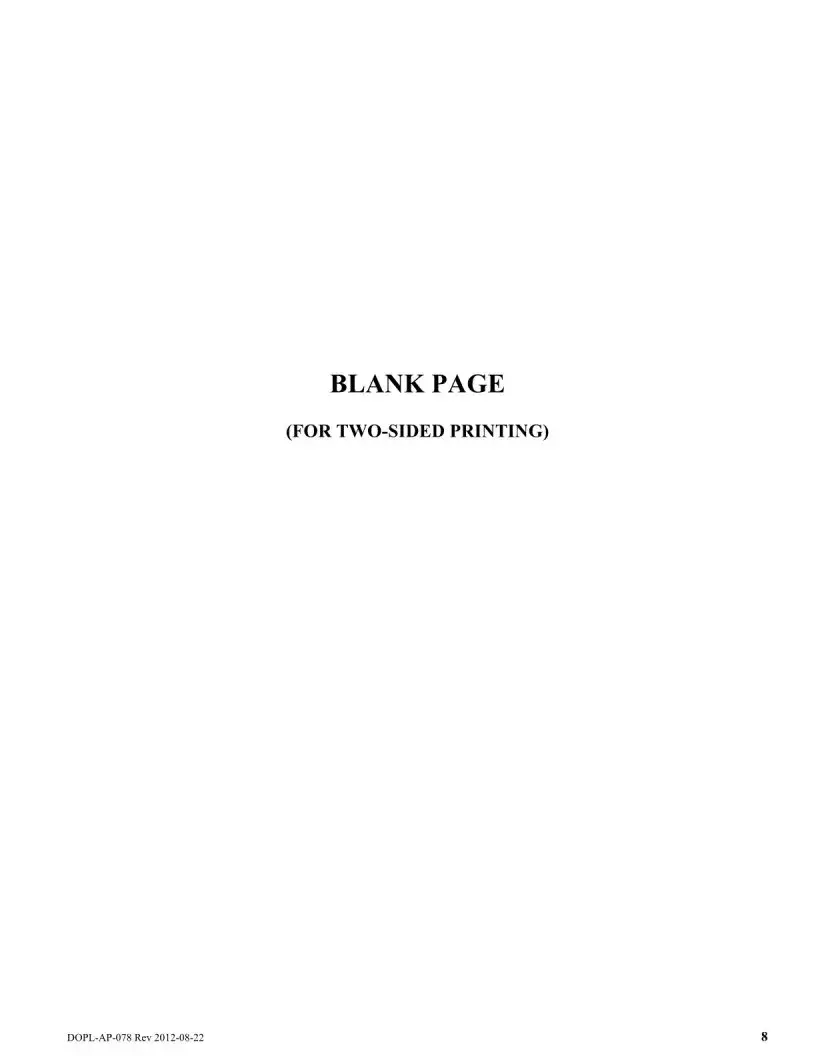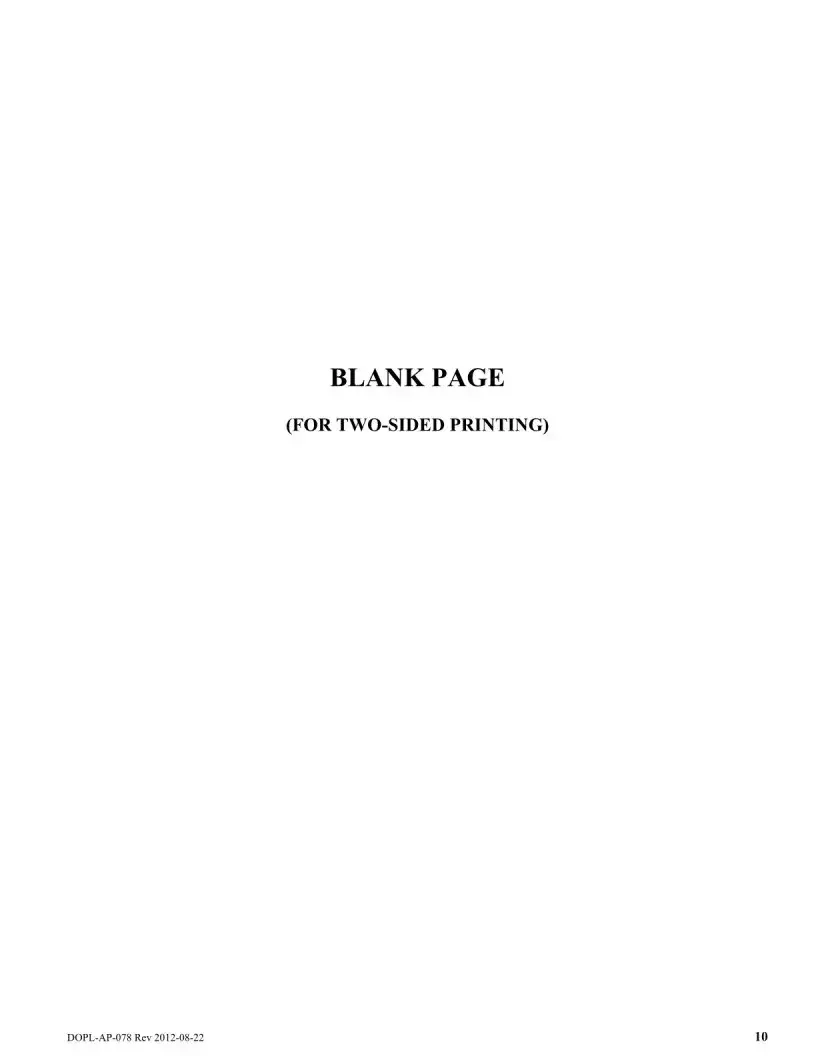The Dopl Ap 078 Utah form, essential in the professional licensing process in Utah, shares similarities with various other documents used in diverse regulatory and application contexts. One similar document is the Uniform Application for Professional Licensure (UAPL), which is used in multiple states. Both forms are designed to streamline the process of applying for professional licenses, requiring detailed personal and professional information to assess the applicant's qualifications and eligibility. The UAPL, like the Dopl Ap 078, plays a critical role in the licensing process, ensuring that applicants meet the standardized criteria set forth by regulatory boards.
Another document akin to the Dopl Ap 078 Utah form is the Employment Eligibility Verification Form I-9, mandated by the federal government for employment in the United States. Although the I-9 serves a different primary purpose — verifying the employee's legal right to work in the U.S. — it similarly collects personal identification information and involves a certification process. Both forms require individuals to provide valid identification and, in some cases, professional documentation, underscoring the importance of verifying credentials and eligibility.
The Professional License Renewal Form, used by licensed professionals to renew their credentials before expiration, also parallels the Dopl Ap 078 Utah form. While the Dopl Ap 078 is typically for initial applications, the renewal form serves for continuity in professional practice. Both documents ensure that licensees maintain the necessary qualifications and adherence to professional standards, safeguarding public welfare through the regulation of various professions.
Applications for Federal Employment, such as Form OF-612, share similarities with the Dopl Ap 078 form, in that both collect comprehensive personal and professional information to evaluate candidates' suitability. However, the federal employment forms extend beyond licensure to consider applicants for governmental positions. They assess not only qualifications but also suitability for service in public offices, reflecting the role of thorough vetting in both employment and licensure.
The Common Application used for college admissions is another document with functional similarities to the Dopl Ap 078 Utah form. While serving different sectors — education versus professional certification — both forms compile extensive background information, educational history, and qualifications to determine eligibility (for college entry or professional licensure). Each plays a pivotal role in gatekeeping respective fields, ensuring candidates meet established criteria.
Business License Applications, required for legally operating a business within a jurisdiction, also resonate with the intent and content of the Dopl Ap 078 form. Though one is for individual professionals and the other for business entities, both necessitate the disclosure of key information to verify compliance with regulations and standards. This similarity underscores the parallel processes of vetting for competency and adherence to regulatory frameworks across spheres of professional activity.
Medical Examination Reports for Commercial Driver's License (CDL) represent another category of documents related to the Dopl Ap 078 Utah form. Required for ensuring the health and safety standards of commercial drivers, these reports, like the Dopl Ap 078, gather personal and professional information but focus on medical fitness. Both forms are vital in their respective fields for assessing eligibility and compliance with regulatory standards, placing a premium on public safety.
Lastly, the Taxpayer Identification Number (TIN) Application forms, such as IRS Form W-9, bear a resemblance to the Dopl Ap 078 Utah form in their function of collecting identification information. While the purpose of the W-9 revolves around tax reporting and compliance, both it and the Dopl Ap 078 serve as foundational documents ensuring individuals or entities meet the necessary criteria for their respective activities. This demonstrates the broad application of thorough identification and vetting processes across diverse regulatory landscapes.
